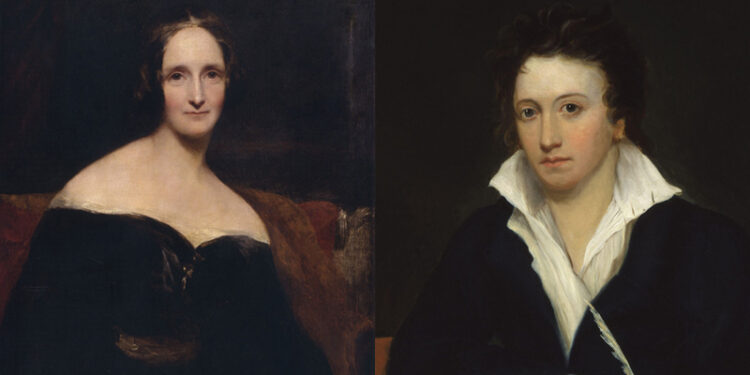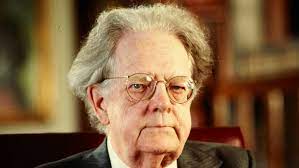Facts about Percy Bysshe Shelley American Romantic Poet
Facts about Percy Bysshe Shelley American Romantic Poet, Percy Bysshe Shelley – Poems, Books & Life, Percy Bysshe Shelley and Shelley’s Poetry Background, percy bysshe shelley famous poems – Born on August 4, 1792, in Horsham, Sussex, England, Percy Bysshe Shelley hailed from an affluent and aristocratic family. The firstborn to Timothy and Elizabeth Shelley, he exhibited a keen interest in literature and a rebellious spirit from his formative years.
Education:
Shelley’s educational journey led him to Eton College, where his love for literature blossomed alongside a growing aversion to societal injustices. In 1810, he enrolled at the University of Oxford but faced expulsion a year later due to his involvement in publishing the pamphlet “The Necessity of Atheism.”
Marriage and Early Works:
In 1811, Shelley entered into matrimony with Harriet Westbrook. However, the marriage encountered challenges, and Shelley found himself increasingly immersed in radical political and intellectual circles. During this period, he penned significant works such as “Queen Mab,” reflecting his atheist and revolutionary convictions.
Exile and Relationships:
Ostracized for his controversial beliefs, Shelley sought refuge in continental Europe in 1816, spending much of his life in exile. Here, he formed close bonds with literary peers like Lord Byron and Mary Godwin (later Mary Shelley).
Major Works:
Among Shelley’s notable contributions are “Prometheus Unbound,” a lyrical drama delving into themes of liberty and human potential, and “Adonais,” an elegy composed in response to John Keats’s death. “To a Skylark” stands out for its lyrical beauty and exploration of the sublime.
Ode to the West Wind (1819): This poem not only showcases Shelley’s fascination with nature but also serves as a reflection of his own turbulent emotions and political ideals. The west wind becomes a symbol of change and revolution, mirroring Shelley’s belief in the transformative power of political and social upheaval.
To a Skylark (1820): Shelley’s ode to the skylark not only celebrates the beauty of nature but also becomes a metaphor for the poet’s longing for artistic inspiration and the transcendent power of the poetic imagination. The skylark, with its perpetual joy, represents an idealized, eternal source of inspiration.
Mont Blanc (1817): Inspired by his travels to the Alps, “Mont Blanc” is a reflection on the awe-inspiring majesty of nature. Shelley contemplates the sublime power of the mountain, exploring themes of mortality and the insignificance of human accomplishments when compared to the grandeur of the natural world.
Adonais (1821): This elegy for John Keats not only mourns the death of a fellow poet but also serves as a critique of the harsh treatment Keats received from the literary establishment. “Adonais” reflects Shelley’s belief in the immortality of poetry and the enduring power of artistic expression.
Prometheus Unbound (1820): This ambitious lyrical drama reimagines the Greek myth of Prometheus, portraying the triumph of good over evil, love over tyranny. Shelley uses the myth as a vehicle to express his views on political and social liberation, envisioning a utopian world free from oppression.
The Mask of Anarchy (1819): In response to the Peterloo Massacre, Shelley wrote this powerful political poem as a call for nonviolent resistance against oppression. The poem advocates for the power of peaceful protest and reflects Shelley’s commitment to social justice and political reform.
Hymn to Intellectual Beauty (1816): In this reflective poem, Shelley explores the concept of an abstract, intellectual beauty that transcends the physical world. The hymn delves into the relationship between beauty and the human spirit, emphasizing the role of the imagination in shaping one’s perception of the world.
These are just a few examples of Percy Bysshe Shelley’s extensive body of work. His poetry often delves into themes of nature, love, political and social justice, and the power of the human imagination.
Death:
Tragedy befell Shelley when he drowned in the Gulf of Spezia on July 8, 1822, at the age of 29. Though the circumstances surrounding his death remain shrouded in mystery, it is widely believed to be a boating accident. His body was discovered and cremated on the Viareggio beach.
Legacy:
Percy Bysshe Shelley remains a prominent figure in the Romantic movement in English literature. His works endure as an exploration of radical ideas, individualism, and the potency of human imagination. Renowned for his eloquence and idealism, Shelley’s poetry has left an enduring imprint on the literary landscape.
TIMELINE
- 1792: Percy Bysshe Shelley is born on August 4 in Sussex, England.
- 1810: Shelley enters University College, Oxford, but is expelled in 1811 for his publication of the pamphlet “The Necessity of Atheism.”
- 1811: Shelley elopes to Scotland with Harriet Westbrook, a 16-year-old student.
- 1812: Shelley publishes his first major work, the Gothic novel “Zastrozzi.”
- 1813: Shelley publishes a pamphlet titled “A Declaration of Rights,” expressing his political views.
- 1814: Shelley and Harriet separate, and Shelley travels to Switzerland. He meets and falls in love with Mary Godwin, the future Mary Shelley.
- 1816: Shelley and Mary marry after the death of Harriet. They spend the summer with Lord Byron and others near Lake Geneva, leading to the creation of some famous works, including Mary Shelley’s “Frankenstein” and Shelley’s “Hymn to Intellectual Beauty.”
- 1817: Shelley writes the long narrative poem “Alastor, or The Spirit of Solitude.”
- 1818: Shelley completes the tragedy “The Cenci.”
- 1819: This is a prolific year for Shelley:
- He writes the lyric drama “Prometheus Unbound.”
- He pens the political poem “The Mask of Anarchy” in response to the Peterloo Massacre.
- “Ode to the West Wind” is written during this period.
- 1820: Shelley writes “To a Skylark” and completes “The Witch of Atlas.”
- 1821: Shelley completes “Adonais,” an elegy for John Keats.
- 1822: Shelley drowns in the Gulf of Spezia on July 8. His posthumously published works include “Epipsychidion” and “The Triumph of Life.”
These are just some highlights from Percy Bysshe Shelley’s life and literary career. His works span a range of themes and genres, showcasing his intellectual and poetic contributions to the Romantic era.
Related

















